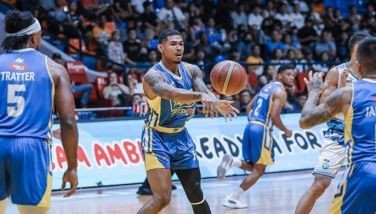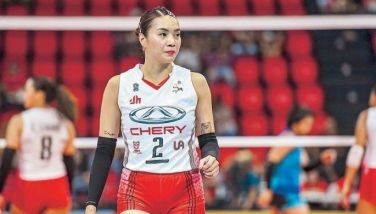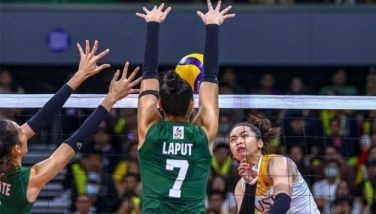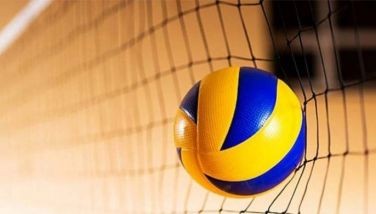A question of why
The performance of the all-Filipino, all-amateur Gilas Pilipinas squad was remarkable, though disappointing to many observers, spoiled as we are on the successes of past Gilas Pilipinas incarnations. The Samahang Basketbol ng Pilipinas is taking the long view on the matter, and that is probably that. Particularly irksome to some was the decision to have head coach Tab Baldwin coach Ateneo de Manila in the UAAP instead of joining the Philippine team because he is, well, the Philippine team head coach. The simple explanation was that they trusted Josh Reyes who is, to be fair, also deeply experienced with both the national team and the PBA.
However, this answers the justification behind the decisions, but not the overriding question of why this is being done. Of course there are always going to be situations where teams matriculate and are given opportunities to merely participate for the sake of growth. The NBA D-League, for example, is a chance for assistant coaches, reserve players and rookies to impress the organization. Starters and senior players are even forbidden from playing lest they risk injury. Considering that this is done every season despite roster changes and the heavy game schedule in-season, the NBA sees some wisdom in it, hopefully. At worst, it is a chance for coaches and made players to avoid burning out from a heavy eight-month schedule which includes physical games, required appearances, long road trips, early-morning flights and games on holidays like Christmas day.
But the NBA is a commercial professional league. It has settled into the new norm of having its younger players do the heavy lifting on the national team because they have not been burdened as much by personal appearances, endorsement deals, other commitments, fatigue and injury. With all the challenges of inviting older players and persuading them to suit up for Team USA Basketball, take the path of least resistance: give it to the young guys. Of course, this is also a risk. The reason the first Dream Team was born was precisely because college players were getting their butts kicked in the Olympics and world championships. This is a convenient compromise, but still a risky one, when you think about it.
Since the PBA has been helping the national team since 1990 (the year before the US Dream Team joined the Tournament of the Americas in Portland), the league has been trying to fit its schedule around the national team. Though the initial once-a-week practice schedule is not ideal, the SBP will take it. Where else are you going to get the best talent? After the PBA was formed in 1975, the Philippines no longer qualified for the Olympic Games. That is no coincidence. Firstly, the basketball culture changed. In the old MICAA, players were also company employees. In the PBA, they became purely professional athletes. This elevated the game even further, since they practiced and played full-time, and there was more at stake. College players now knew they could make a living playing basketball. They looked past playing for the Philippine team and towards making money and giving their families a better life.
In the meantime, as other countries got better, the country’s amateurs became the second division of basketball. They were being recruited to play for flag and country, and willingly said yes. A parallel can be drawn between World War II and the Vietnam War. In World War II, the average American soldier was 26 years old, more mature, likely a college graduate, and able to withstand the rigors of warfare. In Vietnam, the terrain was unfamiliar, and the average American GI was only 19 years old. Thus was born post-traumatic stress disorder (PTSD), which affected hundreds of thousands of military personnel. PTSD was virtually non-existent in previous wars. That is the difference a few years of maturation can make.
One of the problems of having a full-time national team in the Philippine setting is that there is nowhere they can really compete in on a regular basis except the PBA. Collegiate leagues only run for a couple of months. Commercial leagues are not competitive enough. And there are no year-round tournaments where they can sharpen their skills and face gradually tougher challenges. So what is the next best thing? Put together a selection of invited players and join FIBA tournaments. Of course, we will be fielding newcomers, youngsters against the full-time, grizzled veterans of other FIBA nations whose tournaments are built around the FIBA schedule. So we’re back to 1975, in a manner of speaking.
There may be a need to condition the Filipino public that this team is not the final line-up, it needs time to mature, and is preparing for competitions years from now. When Orville and Wilbur Wright were trying to perfect their first airplane, they would bring five sets of spare parts with them every day, because that is how many times they expected to fail before calling it a day and trying again the following morning. But, in the end, they did launch the first manned flight, ahead of the much-better funded, much more publicized Samuel Pierpoint Langley. The Wright brothers knew what they were in for, and were able to get support from people who also understood that the going would be tough for a while before it got better. Neither of the brothers nor any of their crew even had a college degree. Langley had the best minds money could buy, working with the best equipment of the day. In the end, the Wrights prevailed because they saw the big picture, because they wanted to change the world, whereas Langley merely wanted to be famous. There is a difference in the scale of thinking.
These young Gilas Pilipinas men will take the slings and arrows until hopefully, the pedigreed names like Clarkson, Paras and others join them on the squad. In the meantime, they will pay their tuition through the direct and indirect brickbats thrown at them by a critical, expectant Filipino public. But what did we expect, that they would say no to wearing the flag? Of course they would say yes. They are the underdogs. But so is everyone else when they first start. The problem is that this process – and it will be a long one – is not clear to the public. The impatient, instant-gratification, high-score-loving audience that Filipinos are, this is another culture shift, like cheering in the Azkals for near-misses and even 1-0 scores. The audience needs re-education. Players get old or play for pay elsewhere. There is no forever in basketball, especially the national team.
- Latest
- Trending
































